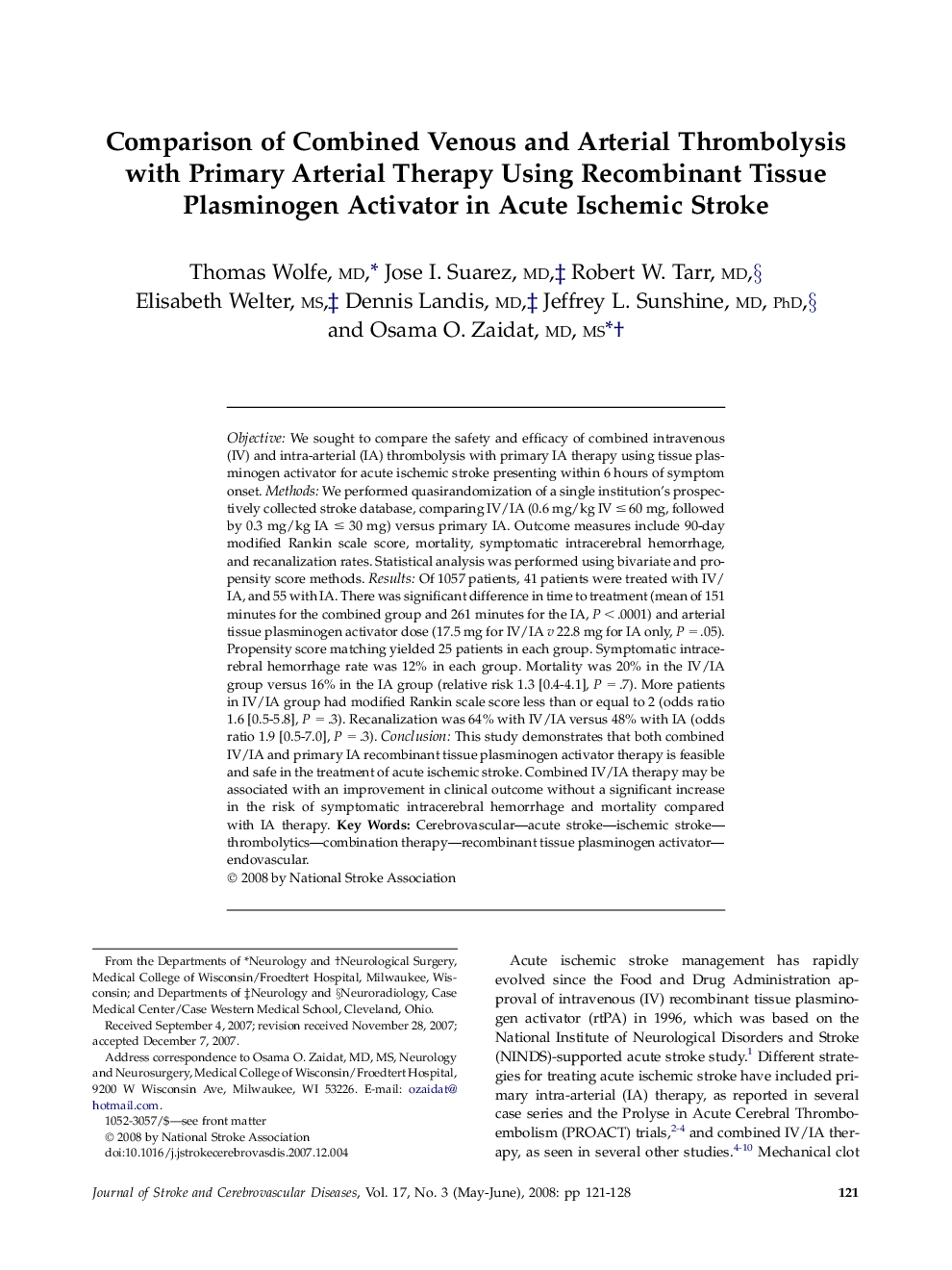| Article ID | Journal | Published Year | Pages | File Type |
|---|---|---|---|---|
| 2702875 | Journal of Stroke and Cerebrovascular Diseases | 2008 | 8 Pages |
ObjectiveWe sought to compare the safety and efficacy of combined intravenous (IV) and intra-arterial (IA) thrombolysis with primary IA therapy using tissue plasminogen activator for acute ischemic stroke presenting within 6 hours of symptom onset.MethodsWe performed quasirandomization of a single institution's prospectively collected stroke database, comparing IV/IA (0.6 mg/kg IV ≤ 60 mg, followed by 0.3 mg/kg IA ≤ 30 mg) versus primary IA. Outcome measures include 90-day modified Rankin scale score, mortality, symptomatic intracerebral hemorrhage, and recanalization rates. Statistical analysis was performed using bivariate and propensity score methods.ResultsOf 1057 patients, 41 patients were treated with IV/IA, and 55 with IA. There was significant difference in time to treatment (mean of 151 minutes for the combined group and 261 minutes for the IA, P < .0001) and arterial tissue plasminogen activator dose (17.5 mg for IV/IA v 22.8 mg for IA only, P = .05). Propensity score matching yielded 25 patients in each group. Symptomatic intracerebral hemorrhage rate was 12% in each group. Mortality was 20% in the IV/IA group versus 16% in the IA group (relative risk 1.3 [0.4-4.1], P = .7). More patients in IV/IA group had modified Rankin scale score less than or equal to 2 (odds ratio 1.6 [0.5-5.8], P = .3). Recanalization was 64% with IV/IA versus 48% with IA (odds ratio 1.9 [0.5-7.0], P = .3).ConclusionThis study demonstrates that both combined IV/IA and primary IA recombinant tissue plasminogen activator therapy is feasible and safe in the treatment of acute ischemic stroke. Combined IV/IA therapy may be associated with an improvement in clinical outcome without a significant increase in the risk of symptomatic intracerebral hemorrhage and mortality compared with IA therapy.
